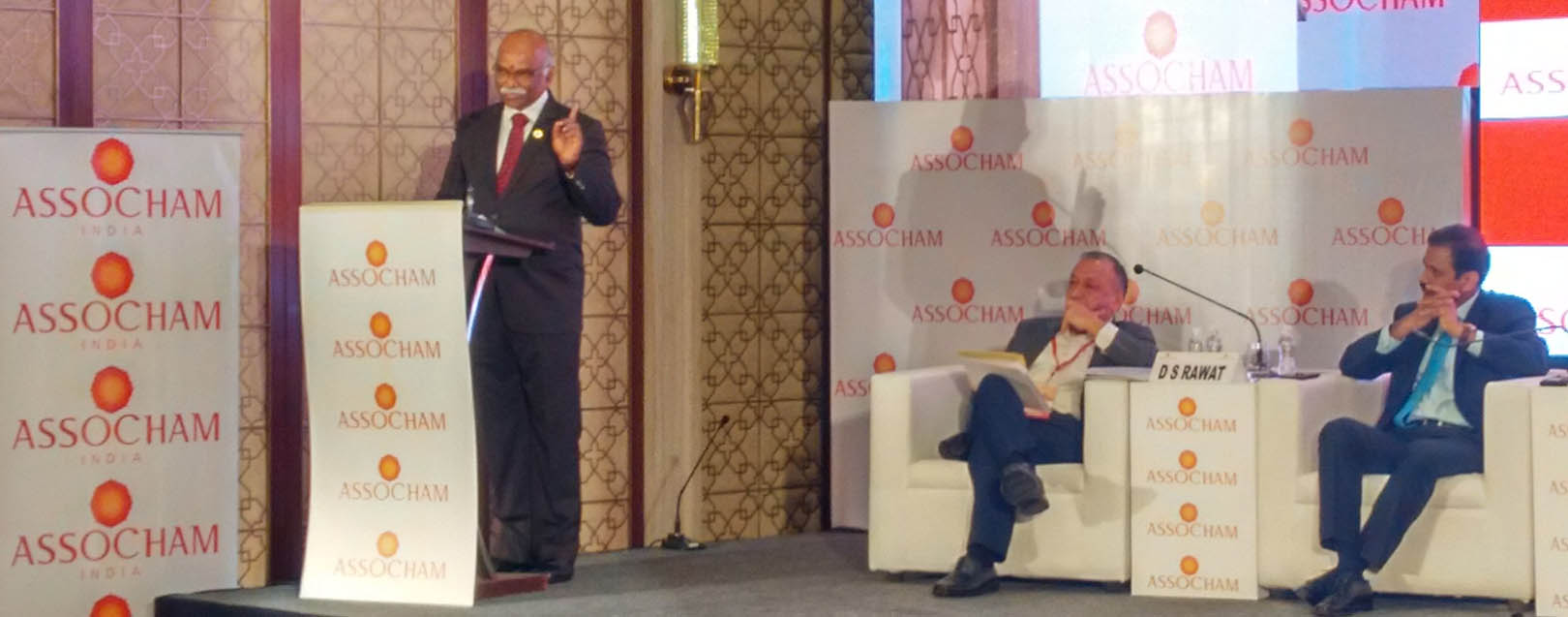
THE CHANGING LANDSCAPE OF NBFCS
Sairaj Iyer
A discussion on the changing landscape of non-banking financial corporations by Assocham saw participation from leading financial strategists. Sunil Kanoria, President of Assocham and Raman Aggarwal, Chairman of the Finance Industry Development Council (FIDC) inaugurated the summit while V. Vaidyanathan, Founder & Chairman, Capital First Limited delivered the introductory address. In his brief address, Vaidyanathan summarized the innovation quotient in the sector and the role of the Indian regulators in the growth of NBFCs.
NBFCs- HUB OF INNOVATION
According to Vaidyanathan, the NBFCs have succeeded in penetrating the bottom of the pyramid by using innovative schemes and low-cost structures. This enabled NBFCs to reach the last mile financing, as well as sectors such as student loans, farm loans, mortgages and business loans. “Finance companies are a hub of innovation. They are innovatively financing health care, cars, etc., through tenor, repayment schedules, collaterals and a number of other factors,” he said, referring to innovations from US, Chinese, and British NBFCs.
On the domestic front, he said that RBI regulations have resulted in the growth in all parameters. “NBFCs, unlike shadow banks such as chit funds and roadside moneylenders, are part of the stringent regulations. NBFCs comply with the capital adequacy requirement of 15%, and the NPA recognition norms such as 90 DPD, like the banks. An annual inspection is very stringent, with stiff board governance norms and finally, NBFCs also lend and collect through the banking system.”
Vaidyanathan also proposed that NBFCs be known by the services they offer. “In the US, they are referred to as finance companies. It is better to be known by what a company does. For example, MFI does micro-finance, HFC does Housing Finance, Life Insurance Company does life insurance and General insurance companies do Insurance of property and cars.”
THE CHANGING LANDSCAPE
Gandhi, Deputy Governor of the Reserve Bank of India also addressed the audience, describing the changing landscape, and that the NBFC sector has been a “part and parcel of the regulatory structure” while complimenting NBFCs as a part of the financial milieu.
On the aspect of the regulations, Gandhi says, “NBFCs irrespective of size cannot be let off without a regulatory permit. It may be argued that NBFCs do not pose a risk to depositors since they do not depend on public funds either directly or indirectly. However, they do deal with customers, and customer protection issues still exist. Maturity transformation automatically covers the transfer of asset, liability, and non-banks have a higher liquidity risk. It will be prudent to let only banks accept deposits.”
Harmonization of regulations is necessary to create a level-playing field between banks and NBFCs. Although, NBFCs play an important role in financing an economy, they are also a source of systemic risk, especially when it is interconnected with the banking system. Hence, the system needs appropriate monitoring, and policy application to mitigate the challenge of systemic risks. Gandhi shares an example of harmonization, “Similar regulations should be available to remove arbitrage. For example, Basel 3 norms will not be applied to NBFCs.”
INDUSTRY INSIGHTS
The summit managed to gather insights from CEOs and MDs of other leading NBFCs. Abhimanyu Munjal, CEO of Hero FinCorp addressed the challenge of mobility within NBFCs. Most banks and financial organizations are looking at ways and means of maximizing their relationships with customers, vendors, and partners by using technologies such as mobility, IoT (internet of things), analytics and data on every customer moment. Abhimanyu Munjal emphasized that technology focus is important, but they have been misused so much that the next level is only horoscope or astrology. Most technologies such as mobility and analytics have matured. Addressing the challenges, he avers, “I feel alternate credit models are important, and the ecosystem is changing dynamically. We have a lot of companies who are using alternate credit models, and when I speak to them about collection models, they do not agree. I believe that with diversity, we need smart analytics and alternate credit models too. These are an integral part, if not adopted; we would become extinct like the Blackberries and Nokias of the world. Rural customers have cash, but don’t know banking, one should focus on the smart way to do collections, and at low-cost models.”
Umesh Revankar, MD & CEO, Shriram Transport Finance Corporation shares his point on a similar vein. He says, “It is difficult to penetrate into the rural areas and that too in single owner vehicle segment. Assessing customer data are challenging in tier 3 & below group cities. Multiple questions, get raised while offering a loan, a customer may have a bank account, but does he have a banking habit? Secondly, if the customer doesn’t have a track record, how does he do business? In India 60-80% business is done in cash and hence one can’t build a track record.”






 to success.
to success.